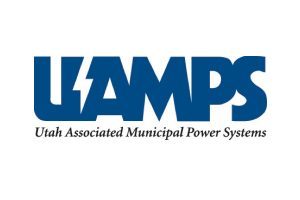Part 1 of 3 Parts
I have been following the story of a number of cities in the southwest who have signed on to receive power from small modular reactors being built by NuScale at the Idaho National Laboratory. Some cities have withdrawn from the project and other cities are reconsidering their participation. There was an October deadline for participants to change the terms of their participation and seven southern Utah cities chose to cancel their involvement. Now remaining cities are passing resolution to place a cap on the cost of their participation in the first phase of licensing.
The Carbon Free Power Project is a special purpose entity owned by Utah Associated Power Systems (UAMPS). The location for the power plant being planned by NuScale is at the Department of Energy’s Idaho National Laboratory near Idaho Falls. Each small modular reactor module (SMR) is about one seventh of the size of a conventional nuclear power reactor. The current plan is to construct twelve of them at the plant but more of the small reactors can be added to the plant as needed.
The seven Utah cities which have withdrawn from the project include Heber, Logan, Bountiful, Beaver, Lehi, Murray and Kaysville. Washington City, Santa Clara, Hurricane and Enterprise in Washington County and Paragonah and Parowan in Iron County are still participating. Beaver is the only Southern Utah city to drop out of the project. All the remaining Southern Utah cities have adopted resolutions relative to the Participants Entitlement Share under the Carbon Free Power Project Power Sales Contract for the remaining first phase of the licensing period.
Jack Taylor is the public works director for Santa Clara. He told an interviewer that after seeing several other cities withdraw from the project, they decided that they wanted to create a monetary safeguard. He said, “If anybody else dropped out, we didn’t want it to continue to go up, a lot of the other city councilmen or power boards didn’t want to get involved with nuclear power.”
Santa Clara has signed up for three gigawatts entitlement share in the Carbon Free Power Project. Their approved resolution says that the maximum amount of money from their annual budget that they are willing to spend is three hundred and ninety-seven thousand dollars. This is nine thousand dollars more than their original commitment before the other cities dropped out of the project. Taylor said, “I just didn’t want it to go any higher, so we set a limit. If there’s more that drop out then I’ve got to bring it back to the council. I didn’t want all that responsibility on my shoulders. If it got higher then I would bring it back to the council, and they would determine whether they wanted to stay in the project or not.”
Taylor went on to say that Santa Clara still believes in the project, especially if the cost stays around fifty-five dollars a megawatt hour. He mentioned that the other options were coal, wind and solar. He was concerned that wind power would only be available about thirty percent of the time.
Please read Part 2 next
